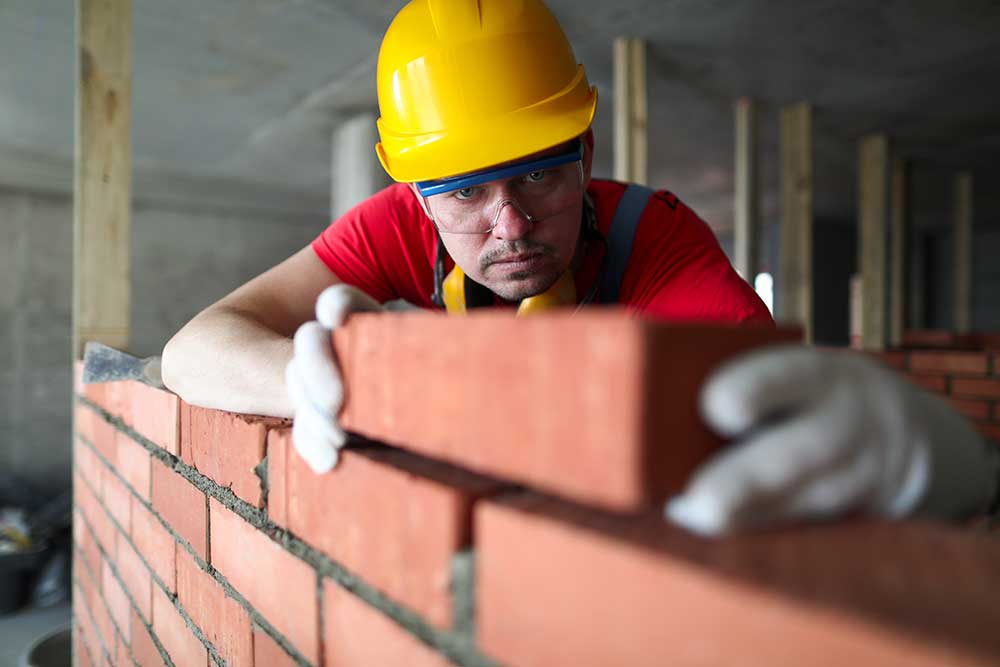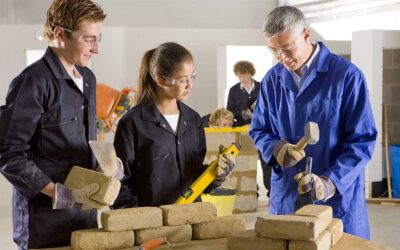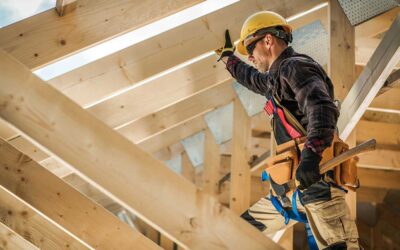Masonry is one of the world’s oldest and most respected trades. With ancient roots, masonry has been responsible for constructing some of the most iconic structures in human history, from the pyramids of Egypt to the brick townhouses of colonial America. Today, masons play a crucial role in building and maintaining structures across the U.S. Let’s delve deeper into what it means to be a mason in contemporary America.
Skills Required for a Mason:
- Technical Proficiency: Masons must understand how to read blueprints and be knowledgeable about building codes and inspection regulations.
- Physical Stamina: The job often involves heavy lifting, bending, kneeling, and standing for long durations.
- Precision: Masonry requires a keen eye for detail to ensure that bricks or stones fit perfectly.
- Creativity and Artistic Flair: A sense of design and aesthetics is valuable for decorative masonry or stonework.
- Problem Solving: Masons must address on-site challenges, from unexpected structural issues to design modifications.
The Masonry Landscape in the U.S.
According to the U.S. Bureau of Labor Statistics, as of 2019, there were approximately 292,500 brickmasons, blockmasons, and stonemasons employed in the United States.
Job Opportunities for Masons
Residential Construction: Many masons work on new home constructions, erecting brick or stone walls.
Commercial Construction: Masons play a role in constructing office buildings, factories, schools, and more.
Restoration and Repair: With many historic stone and brick structures across the U.S., there’s a demand for masons skilled in restoration.
Freelance and Artisan Work: Some masons specialize in decorative stonework, creating bespoke client designs.
Public Infrastructure: Masons are involved in constructing and maintaining bridges, roads, and public monuments.
Compensation for Masons
According to Indeed, the average salary for a Mason is $23.90 per hour in the United States. In an article in U.S. News and World Report, Brickmasons and Blockmasons made a median salary of $59,340 in 2021. The best-paid 25% made $76,070 that year, while the lowest-paid 25% made $47,110.
Types of Jobs Masons Typically Work On
Brick and Stone Walls: This is perhaps the most common task associated with masonry.
Chimneys: Constructing and repairing chimneys is another primary job for masons.
Patios and Walkways: Residential homes often employ masons to build stone or brick patios and pathways.
Monuments and Memorials: Skilled masons might work on public or private monuments, requiring precision and attention to detail.
Decorative Facades: Masons might be responsible for creating ornate facades or features, especially in commercial settings.
Being a mason is a blend of physical labor, technical proficiency, and artistic expression. As urban development continues and the desire to preserve historical structures persists, masons remain integral to the construction industry. For those with the right skills and dedication, masonry offers a rewarding and respected career path in the U.S. construction landscape.
Becoming a Mason
To become a mason in the construction industry, you typically follow these steps:
- High School Education: Start by completing your high school education or obtaining an equivalent diploma like a GED. A solid educational foundation is essential for understanding construction principles and reading blueprints.
- Optional Pre-Apprenticeship Programs: Some areas offer pre-apprenticeship programs in masonry. These programs provide hands-on training and a basic understanding of masonry skills, tools, and safety.
- Find an Apprenticeship: The most common path to becoming a mason is through an apprenticeship program. Look for masonry contractors or unions in your area that offer apprenticeships. These programs typically combine on-the-job training with classroom instruction.
- Complete an Apprenticeship: During your apprenticeship, you will work alongside experienced masons, learning the skills and techniques necessary for the trade. Apprenticeships can last several years, during which you’ll gain practical experience in tasks like laying bricks, blocks, or stones, mixing mortar, and understanding construction plans.
- Education: Besides on-the-job training, you may attend classes to learn about safety regulations, building codes, and more advanced masonry techniques.
- Certification: While certification is not always required, certification from organizations like the Mason Contractors Association of America (MCAA) or the National Center for Construction Education and Research (NCCER) can enhance your credentials and job prospects.
- Experience and Skill Development: Continue to work in the field, gaining experience and honing your skills. Experienced masons often take on more complex projects and may become supervisors or project managers.
- Networking: Building a network of contacts in the construction industry can be beneficial for finding job opportunities and advancing your career.
- Keep Up with Industry Trends: Stay informed about new construction materials, techniques, and safety regulations by attending workshops, seminars, and industry events.
- Consider Specialization: As you gain experience, you may choose to specialize in a specific area of masonry, such as bricklaying, stonemasonry, or concrete finishing.
Requirements and paths to becoming a mason can vary by location and employer, so it’s essential to research and follow the specific guidelines in your area.
Unveiling the Distinctions: Freemasons vs. Masons
The term “mason” often evokes two distinct connotations: the craftsperson who works with stone, brick, and other materials and the member of the Freemasons, a historic fraternal organization. The two have some historical linkage, but they’ve primarily evolved into separate entities. Here’s a brief exploration of the relationship:
Historical Origins:
The Freemasons can trace their symbolic origins back to the stonemason guilds of medieval Europe. These guilds were associations of skilled masons who came together for mutual aid, professional development, and to protect the secrets of their craft. Over time, these guilds started incorporating non-literal, philosophical teachings, borrowing symbols from the craft of masonry (like the compass and square) to impart moral lessons.
Evolution of Freemasonry:
As these stonemason guilds evolved, they began admitting members not involved in the masonry trade, turning more into a fraternal organization focused on personal and societal improvement, rather than a trade guild. Thus, by the 1600s and 1700s, especially in England and Scotland, “freemasonry” became less about literal stone cutting and more about a symbolic approach to personal development.
Modern Distinction:
Today, the distinction is clear.
Operative Masons: These are individuals who work in the masonry trade, crafting structures from brick, stone, and other materials.
Speculative Masons or Freemasons: Members of the fraternal organization known as the Freemasons. They don’t necessarily have any background in the physical craft of masonry. Instead, they engage in rituals and activities focused on personal growth, charity, and community service.
Common Symbolism:
While most modern Freemasons are not masons in the construction sense, they still use tools and symbols from the trade in their rituals. Symbols like the trowel, compass, and square have metaphorical meanings in the Freemason rituals, representing various moral lessons or virtues.
While there’s a historical connection between the craft of masonry and the Freemasons, the two are largely separate in the modern era. The former is a trade profession, while the latter is a global fraternal organization. Nevertheless, the enduring symbols and teachings from the world of masonry still play a central role in Freemasonic rituals and philosophy.




